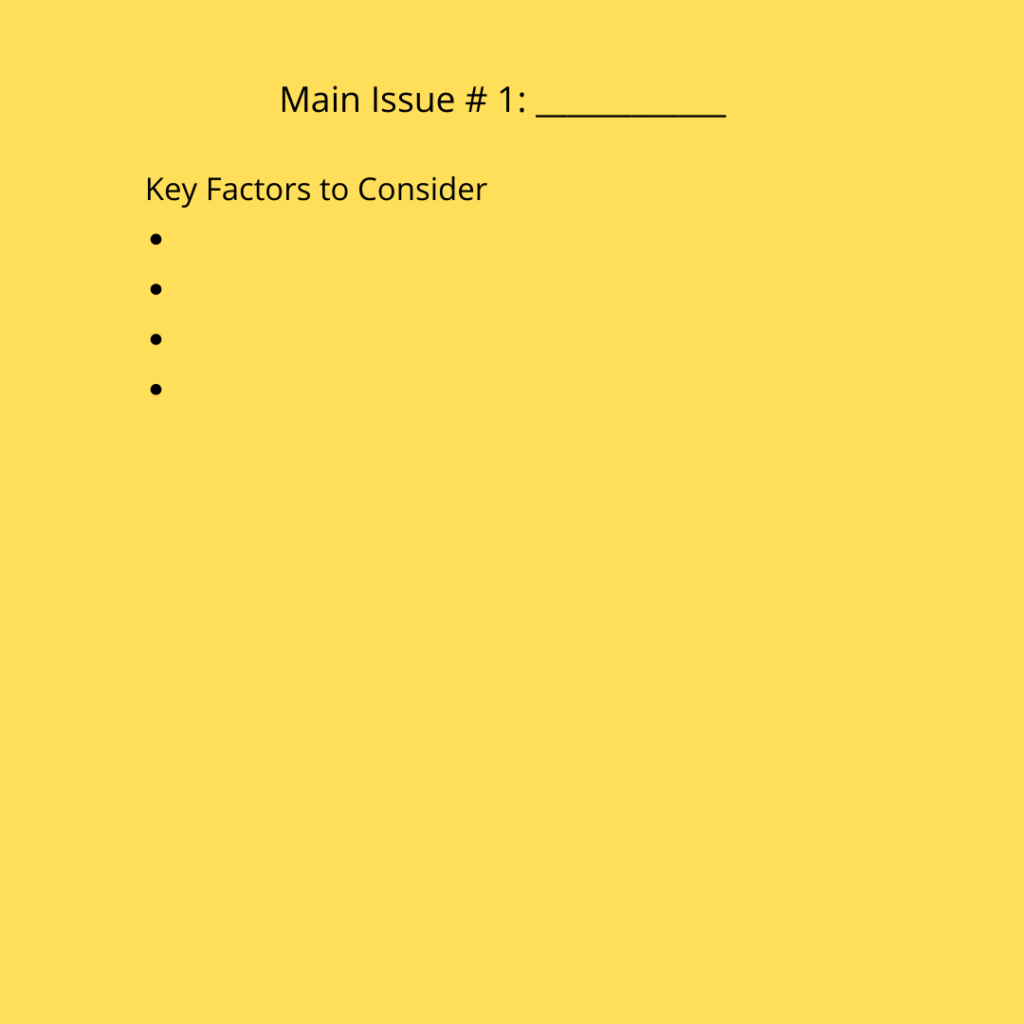
(c) Maryann Bates [email protected]
Dr. Jimenez was frustrated as he read the discussion summaries from his students. One student from each discussion team served as a facilitator. The facilitators took notes on a flip chart and then wrote up a summaries of their team’s discussions. Most of these summaries were simply a set of disconnected statements that didn’t give you a real sense of the discussion. Part of the problem stemmed from the fact that the flip chart notes were simply a stream-of-consciousness capture of what was said. The facilitators made little effort to bring these comments into some form of coherence. Jimenez was frustrated but wasn’t sure how to help his students.
And then he saw Sophia Lancaster take notes. She came to class with flip charts already organized and labeled as shown below.

She had prepared six pieces of chart paper like this, each labeled with space for different issues. Then as the group started their discussion, she filled in the appropriate charts. As the discussion progressed, you could get a clear sense of how her group thought about each issue. The resulting discussion summary was outstandingly clear.
When Jimenez debriefed with Sophia after class, he asked how she came up with her organizational approach.
I’m a creative writing major and we are taught to develop our plot narrative using an approach like what I used today. It’s called a cascaded narrative outline.
From that moment on, Jimenez taught cascaded note-taking in his discussion-oriented classes.
Capturing discussion comments is more than simply a process of recording. It is also an organizing practice that brings coherence to the discussion. Without using an organizational scheme such as cascaded note taking, the discussions will often become simply a series of one-off statements.
In addition to the organizational value, this process can also slow down the discussion so that participants can think about what is being said. With a process like this, participants will often refer to the narrative thread where their comments are best placed as they make new contributions. This encourages discussion participants to pay attention to the whole stream of the discussion and to build on each other’s thoughts.
Dr. Jimenez learned something from Sophia that then became a part of his instructional practice. Successful discussions often borrow techniques from many disciplines – in this case a STEM faculty member borrowing from creative writing. The value of diversity in discussions is not only from the range of perspectives coming from different personal backgrounds, but also from sharing different ways of thinking from different disciplines or fields of study.
Teaching and coaching effective discussions is an ever-evolving process. There is something to be learned from virtually every discussion.
* * *
First comes thought; then organization of that thought, into ideas and plans; then transformation of those plans into reality. The beginning, as you will observe, is in your imagination. – Napoleon Hill, author of Think and Grow Rich
This post is part of our “Think About” education series. These posts are based on composites of real-world experiences, with some details changed for the sake of anonymity. New posts appear Wednesday afternoons.



